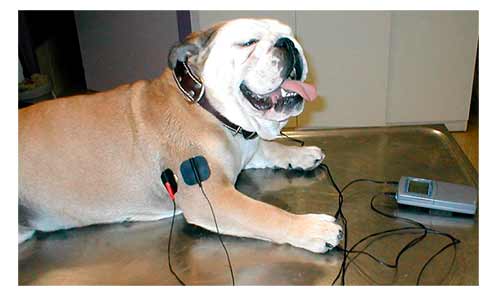TENS is an acronym in English that stands for “Transcutaneous electrical nerve stimulation”. It’s the electrical current most commonly used in analgesia for its safety, comfort for the patient and excellent results.
For proper use we should keep in mind the following parameters:
From 3-4Hz (up to 10) and high amplitude of 250μs or more we will stimulate endorphin secretion.
The device should work between 25 and 30 minutes at a very high intensity, we should clearly see the muscle contractions. The effect can last up to 24 hours.
From 10-20Hz and approximate amplitude of 250μs we will be generating muscular recreation, increased muscle trophism.
We will work around 15-20 minutes at a moderate intensity, being able to observe some muscle contractions.
Between 80 and 100Hz and amplitude of 100-150μs we will be optimally working the localized pain in a knee, shoulder, etc… which is what we call “conventional TENS".
In this case and in order to carry out a local “sedation” we should work for at least 20 minutes and we can leave the TENS for up to a few hours. The intensity is low, without contractions or twitching of the skin and the effect lasts a short amount of time after ending the session.
We should monitor “habituation” by regularly turning up the intensity or slightly modifying the amplitude without stepping outside the parameters. There are devices that enable amplitude modulation that reduce the habituation phenomena.
In order to treat “localized pain”, we should place the electrodes on the painful area regardless of the tissues underneath the electrodes, on the contrary to treat dogs with the “endorphin stimulation” effect we should place them on bundles of muscle groups, since we will encourage large muscle contractions and it will be much more comfortable and effective if we do so over a large muscle bundle.
When we want to provoke muscle contractions we will place a proximal and distal electrode, within the muscle group we want to treat.
You do not always have to put the Red “positive” and the Black “negative” in the same location, but they should be symmetric and never crossed.
For their use in dogs we recommend rubber electrodes and contact gel, since the silicone electrodes often used in humans are going to quickly lose their adhesiveness and part of their conductivity.
There are complete packs on the market for electrostimulation in dogs.
Ortocanis Technical Team

